And how I find them.

Adventure Truck and the Turtleback off road near Cibola Lake on the Colorado River.
I’ve been on the road since the day before Thanksgiving — an early start to my annual snowbird migration to points south. Other than a little over a month spent at a friend’s guest house in Wickenburg, AZ and three days spent in another friend’s guest house in Phoenix, I’m been camping out in my truck camper, the Turtleback. It’s a fully-contained RV with a queen size bed, refrigerator, stove, convection microwave, sink, and bathroom. It can carry 14 gallons of propane, 40 gallons of fresh water, and a total of 60 gallons of wastewater (in two tanks, black and gray). There’s a propane furnace for cold nights and an AC air conditioner for hot days. The two batteries have plenty of juice for overnight stays, are charged by a solar panel during the day, and can be supplemented by an onboard propane generator with the flick of a switch. With its dinette and refrigerator on a slide out, it has plenty of room for one (or two who like each other a whole lot). Best of all, it can go just about anywhere my truck can go and since my truck is a 1-ton 4WD diesel with high clearance, it can go pretty much anywhere it wants to go.
This ain’t no KOA parking lot rig.
Now that I’m back on the road again after my Wickenburg stay, I’ve been sharing photos of my campsites with friends on Twitter and Facebook. The other day one of them asked how I find my campsites. I thought that might make a good blog post.
What I look for
First let me start by explaining what I look for in a campsite.
I want something quiet, private, and safe. I don’t like to listen to generators and I don’t like to close my blinds.
I like a view, but don’t need one. I love camping near moving water or a body of water that’s smooth and reflects the sky.
I must have relatively level ground, although I do have leveling blocks to make minor adjustments if a site has a slope to it. (The camper does not need to be perfectly level.)
I also want something free or cheap or at least worth what I’m paying for it. So far, of the 23 days I’ve spent camping, I’ve only paid for 5 nights. Prices for those campsites — one state park campground, two BLM campgrounds, and two nights at a Las Vegas campground (yes, they have them) — ranged from $5 to $23 per night.

I spent about 10 nights at this free BLM campsite along the Colorado River south of Ehrenberg with some friends. We were on a peninsula and surrounded by water, so I got some fishing and paddling in while I was there.
Because I’m self-contained, I don’t need any hookups or even access to water or a dump station. (This, by the way, is often called “dry camping.”) Picnic tables are nice to have, but I don’t need a fire pit because I don’t usually have a campfire when I’m traveling alone and I have a portable BBQ grill if I want to grill something up. Although these things are nice for long-term stays, they usually come with neighbors so I lose any possibility of quiet or privacy. Those are actually more important to me than the convenience of being hooked up to utilities.

I spent two nights at a Las Vegas campground so I could take in two shows. At $23/night, it was the most expensive overnight stay, but it had clean, hot, private showers.
I’m not opposed to staying in a regular campground with a full hookup once in a while. It’s a good opportunity to dump my tanks, take a long hot shower, top off the charge on my batteries (if needed), and refill my fresh water tank. But as I recently learned after 10 days of dry camping south of Ehrenberg, my black water tank can hold at least 10 days of waste and I don’t use much fresh water. (It probably would have been a perfect stay if it weren’t for battery issues that were resolved when I left by simply replacing two bad batteries.) But the parking lot atmosphere of most RV parks is a real turn off to me and it irks the hell out of me to pay $30, $40, or even $50 to spend a night there.
Where I look
First, I’ve learned over time where the kind of campsites I want can be found.
When Free isn’t Free
Keep in mind that some areas — including the Icicle Creek area I discuss here — require an access pass for parking. I buy my passes annually and keep them in my truck for hiking and camping, which I do three seasons out of the year. It’s worth it to me and I like supporting the park system.
Public land, including National Forest (NF) and Bureau of Land Management (BLM) and sometimes even State Forest (SF) land almost always has some free “distributed” camping. Distributed camping is camping allowed off forest or desert roads in established campsites that are not necessarily in campgrounds. For example, a drive up Icicle Creek in the Leavenworth, WA, area will take you into National Forest with several established campgrounds. Those campgrounds have level parking space, picnic tables, fire rings, and access to toilets and sometimes even water and you’ll pay a fee to use them. But off the main road are side roads with campsites scattered here and there. Those campsites are usually free.
Did you know that you can camp in the NF just outside Grand Canyon National Park for free? And if you know where to look, you can even find back roads into the park that can help you avoid entrance lines? It’s like camping near your own private entrance to the park.

My Thanksgiving dinner campsite on a tributary creek to the John Day River in Oregon.
Even the campgrounds in NF, BLM, and SF areas can be quite a bargain. On Thanksgiving night, for example, I had an entire campground on a creek in Oregon to myself. My back door looked out over the creek, it was dead quiet and completely private, and I had a picnic table and fire ring if I wanted to use them. There was even a very clean pit toilet a 250 feet from my site. All for $5. I can’t complain, can I?
State and county park campgrounds can also be nice, although they can be spendy and are usually crowded on weekends. Washington state campgrounds can be outrageously priced so I generally avoid them unless they have features I can’t get elsewhere.
How I find them
This is where experience is a good teacher. The more I look for and find sites, the better I become at doing it. And getting a feel for an area is also extremely helpful.
I use a few online tools to get started. I start with Google Maps to get a general feel for the area I want to spend the night. What’s there? Towns? Parks? Points of interest? NFs appear on Google Maps; when I get the name of a NF, I can Google it and get details, including detailed maps that show parking areas and forest roads.
I can also go to the BLM website and search its maps for nearby BLM land. Then I can get details about possible camping areas or campgrounds.

I needed a place to stay near Hawthorne, NV, where I planned to meet up with a friend of a friend. No problem: free camping on the lake on BLM land. Too bad the weather was so stormy!
Once I know for sure that camping is allowed in an area, I can use Google’s satellite view to get a look at potential sites. Keep in mind that map view isn’t always accurate — for example, Google maps shows a through road along the levee where we camped in early January; in reality, there’s an inlet cut through the road that clearly shows in satellite view. Satellite view will also show clearings in forested areas, side roads, and even fire pits that indicate an established campsite.


In map view, it looks like the road crosses right over inlet (left) but satellite view tells the real story (right). We camped in the clearing just to the east of where the north side road ends.

I had a streamside campsite in central Oregon. There were about two dozen deer roaming the campground when I arrived late in the afternoon. Only five of the 30 or so sites were occupied.
Another somewhat obvious trick is to simply ask around. For example, when I was near Burns in Oregon looking for a place to stay on my way south, I saw some BLM land that showed a campground. It was pretty remote and it was late in the day; I worried that it might not be suitable for me and then I’d be stuck driving at night, which I hate to do. I Googled BLM and found a BLM field office. (The same one that was in the news a lot last year.) I was close enough to drop by and chat with a ranger. He assured me that the campground was open and would accommodate my rig. I made the hour-long drive south and found what might have been the nicest campground so far. I picked a site along the creek and paid only $8/night.

A bonus to this campsite along the Colorado River just outside of the Cibola Wildlife Refuge was the incredibly dark night sky. I got to practice my astrophotography skills not long after sunset.
I also ask friends. The campsites I stayed in last year and this year south of Ehrenberg on the Colorado River were sites my friends knew well, having camped there for many years. My friend Janet showed me other sites. I found still more just wandering around on my own, like a campsite father down the river near a wildlife refuge.

Greetings from somewhere south of Holtville, CA!
I found the site I was in the last night before my side trip to San Diego (where I am now) by a combination of methods. A friend told me about the hot springs along I-8, although he was pretty sketchy about the name and location. Google maps found the place and directed me to it. A review on Google told me it was BLM with camping available and the reviews were pretty good. The campground host at the long-term (i.e., fee) camping area directed me to free 14-day limit camping about 2 miles south of the hot spring. I drove in, found a level spot, and parked for the night. Only two cars drove past during the 16 or so hours I was there so it was plenty quiet. I got a great night’s sleep — with the bonus of a good hot tub soak in the morning before I hit the road.
I’ll leave San Diego later today and head back east toward Arizona. I’ll spend a night or two in Borrego Springs, following up leads for free campsites with good hiking on BLM and NF land. Then the plan is a side trip to the Salton Sea where I should be able to find a site in the state park there. Then back to Quartzsite for a few days; there’s plenty of free camping out in the desert. After that, who knows? I’m making it up as I go along and only tentatively plan things out a week or so in advance.
I love the flexibility I have on this trip with my smaller rig. I also really love the freedom to make things up as I go along, without having to get approval from (or listen to complaints from) a travel companion. So far, most of my sites have been better than I expected and, as you can imagine, I’m very pleased about that.
I do admit that things can get a bit stressful late in the day when I still don’t know where I’m going to park for the night. But there’s aways plan B: a truck stop or Walmart parking lot. (Fortunately, I haven’t had to resort to either one so far on this trip.) Or a KOA.
Do you have any campsite tips you’d like to share with readers? Please do use the comments link or form to let us know. I’d certainly love to get some new ideas. You can never know too much.

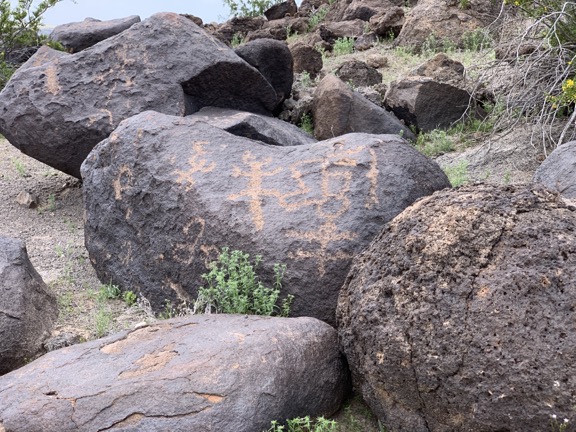
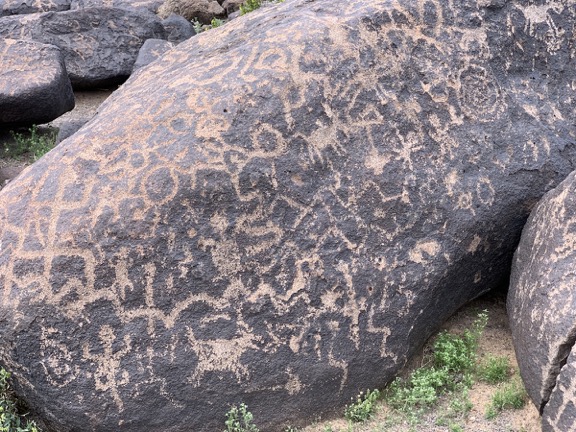
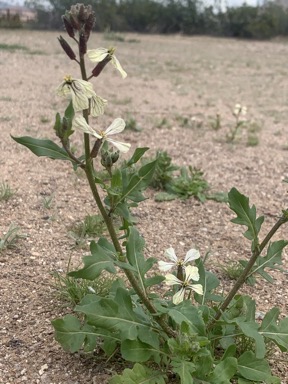

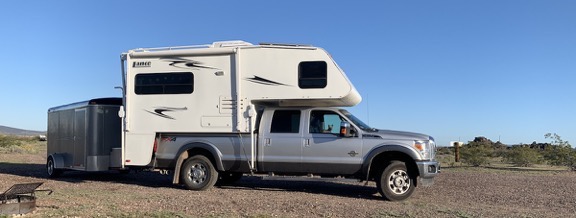
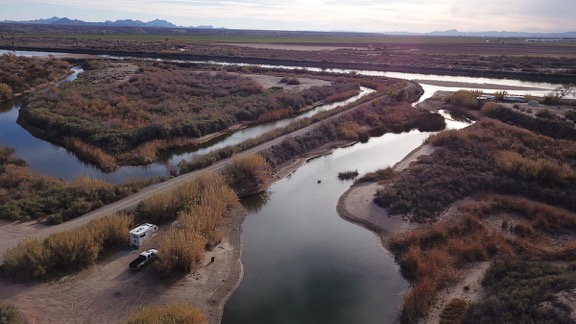
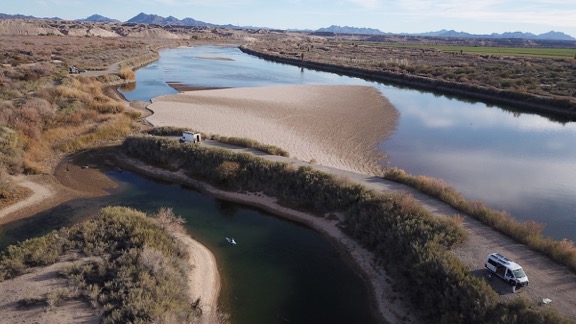
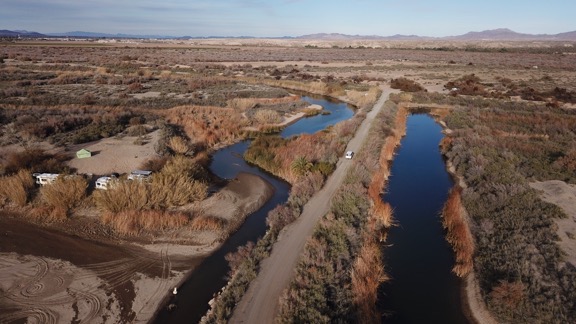
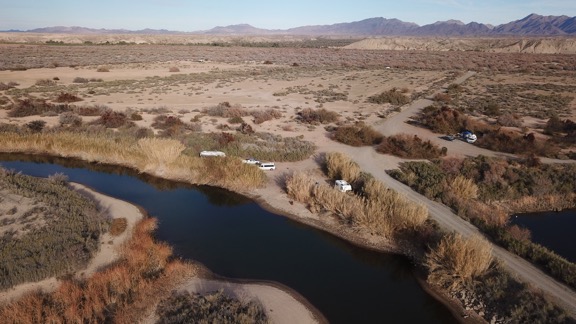
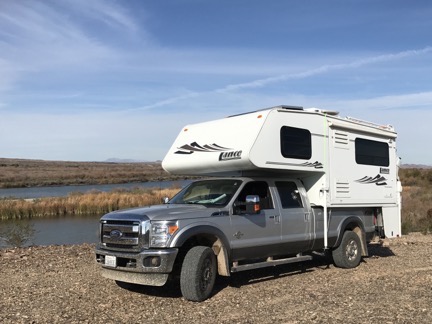
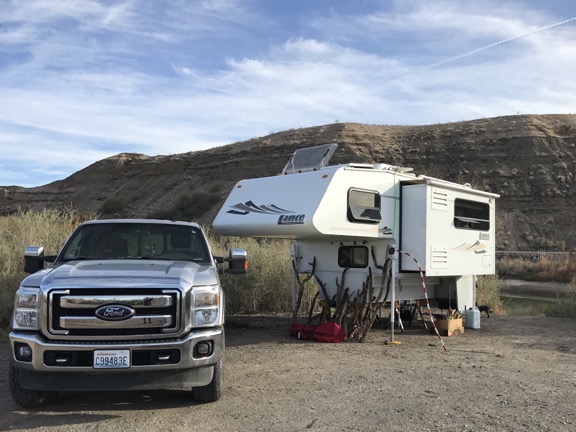
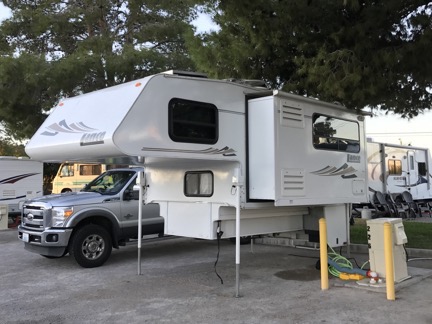
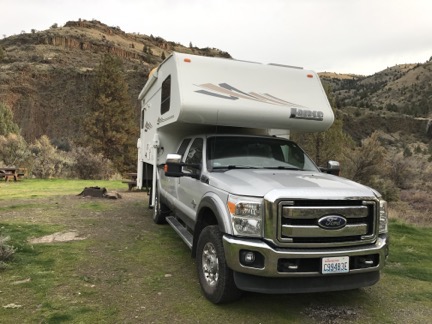

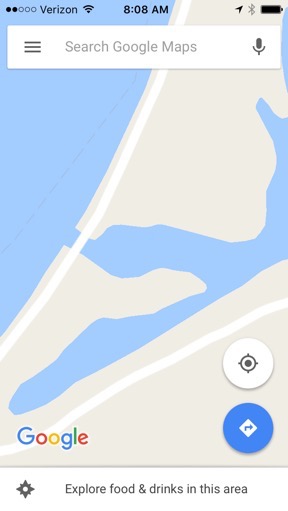
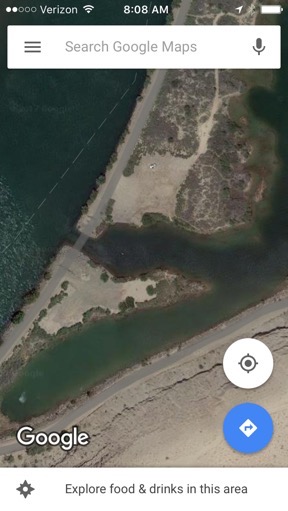
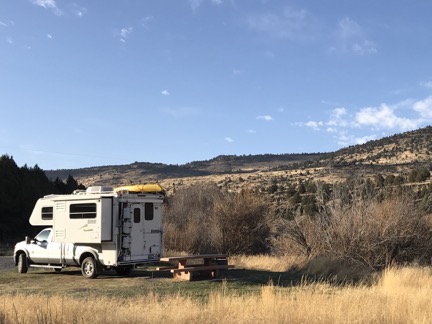
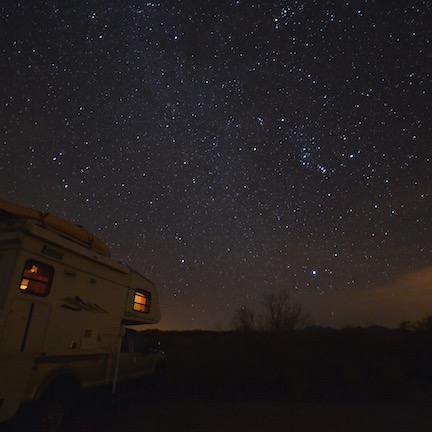
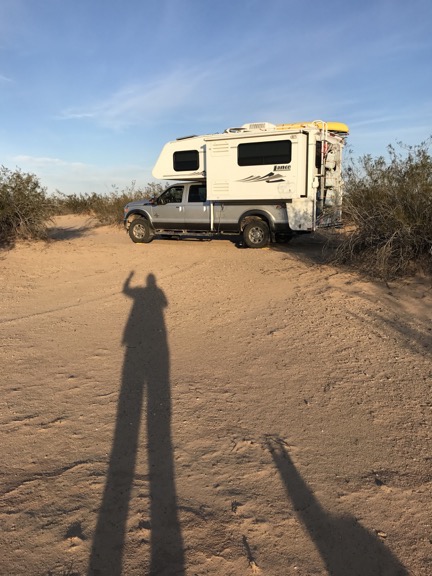




 Parked in the desert north of Phoenix. Photo by Jon Davison.
Parked in the desert north of Phoenix. Photo by Jon Davison.
